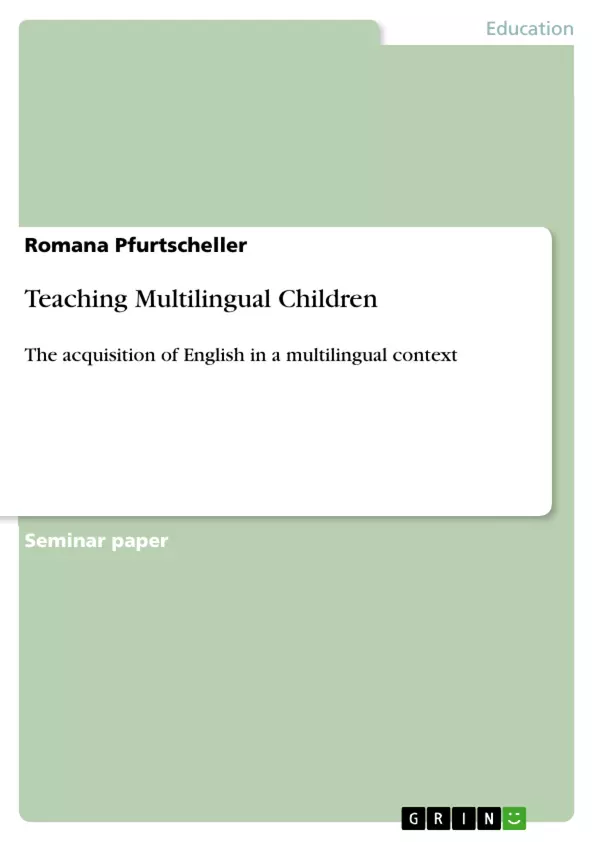This paper gives a basic overview on the subject of English learning of multilingual children. The author begins with the general development of multilingual children, especially concerning their cognitive advantages that have been gained through language acquisition. After that, the paper focuses on the comparison of third language acquisition and second language acquisition. In this chapter the author also provides a study done by various scholars that compares monolingual children to bilingual children that has to be critically reflected. The following section concentrates with the factors influencing learning English in different contexts.
Inhaltsverzeichnis (Table of Contents)
- 1. Introduction
- 2. Development of multilingual children
- 2.1 Cognitive advantages
- 3. TLA compared to SLA
- 3.1 Study concerning monolinguals compared to bilinguals
- 4. Cross-linguistic influence in TLA
- 4.1 Overview
- 4.2 Language Distance and Recency of Use
- 5. Conclusion
Zielsetzung und Themenschwerpunkte (Objectives and Key Themes)
This paper aims to provide a comprehensive overview of the acquisition of English in multilingual children, exploring its unique aspects within the broader context of language learning.
- The cognitive advantages of multilingualism and its impact on language acquisition
- The comparison of third language acquisition (TLA) to second language acquisition (SLA)
- The influence of cross-linguistic factors on TLA, particularly language distance and recency of use
- The challenges and opportunities of multilingualism in education and society
- The evolving role of English as a global language and its implications for multilingual learners
Zusammenfassung der Kapitel (Chapter Summaries)
- Chapter 1: This chapter introduces the topic of teaching English in multilingual children, highlighting the increasing importance of multilingualism in education and the complexities of TLA compared to SLA.
- Chapter 2: This chapter delves into the cognitive advantages of multilingualism, examining how exposure to multiple languages can enhance cognitive flexibility, metalinguistic awareness, and communication skills.
- Chapter 3: This chapter compares TLA to SLA, analyzing the differences in acquisition processes and the factors that influence a learner's success in acquiring a third language.
- Chapter 4: This chapter explores the impact of cross-linguistic influence on TLA, with a focus on the role of language distance and recency of use in shaping language learning outcomes.
Schlüsselwörter (Keywords)
Key terms and concepts in this paper include multilingualism, third language acquisition, second language acquisition, cognitive advantages, cross-linguistic influence, language distance, recency of use, and the role of English as a global language.
- Citation du texte
- Romana Pfurtscheller (Auteur), 2018, Teaching Multilingual Children, Munich, GRIN Verlag, https://www.grin.com/document/938393



